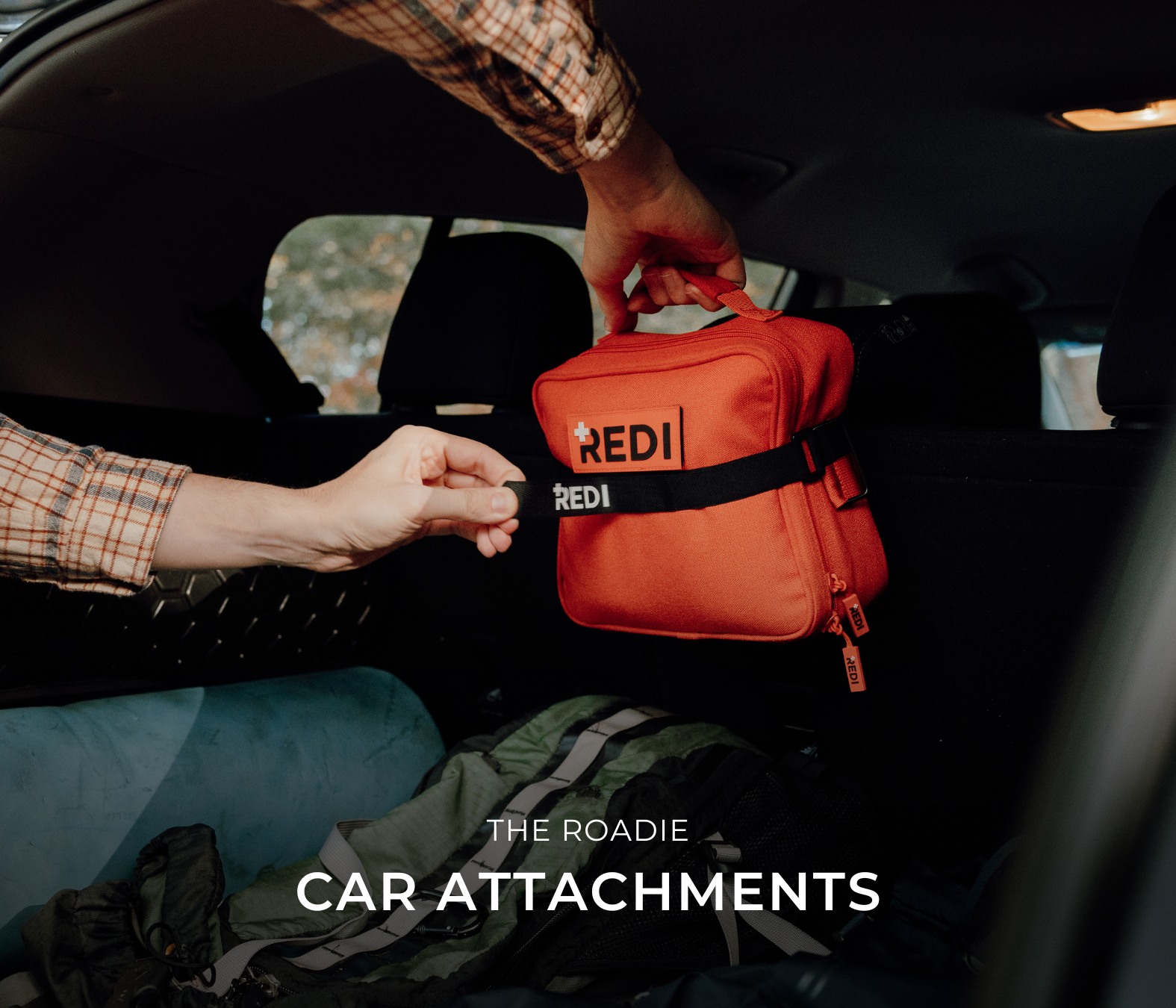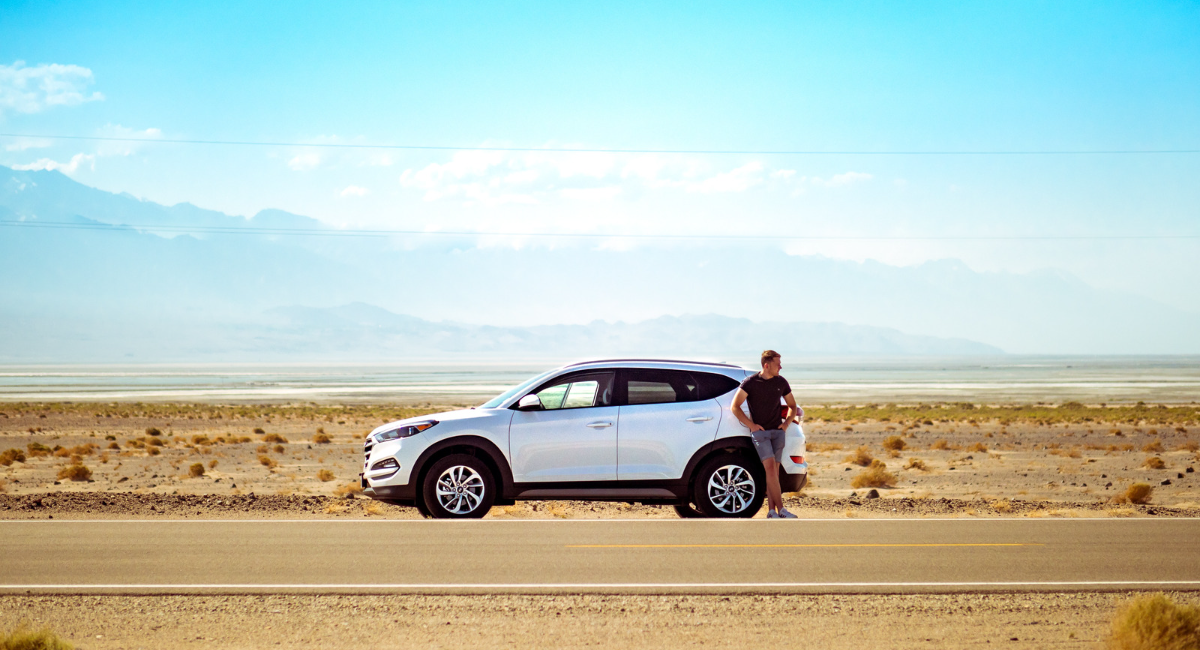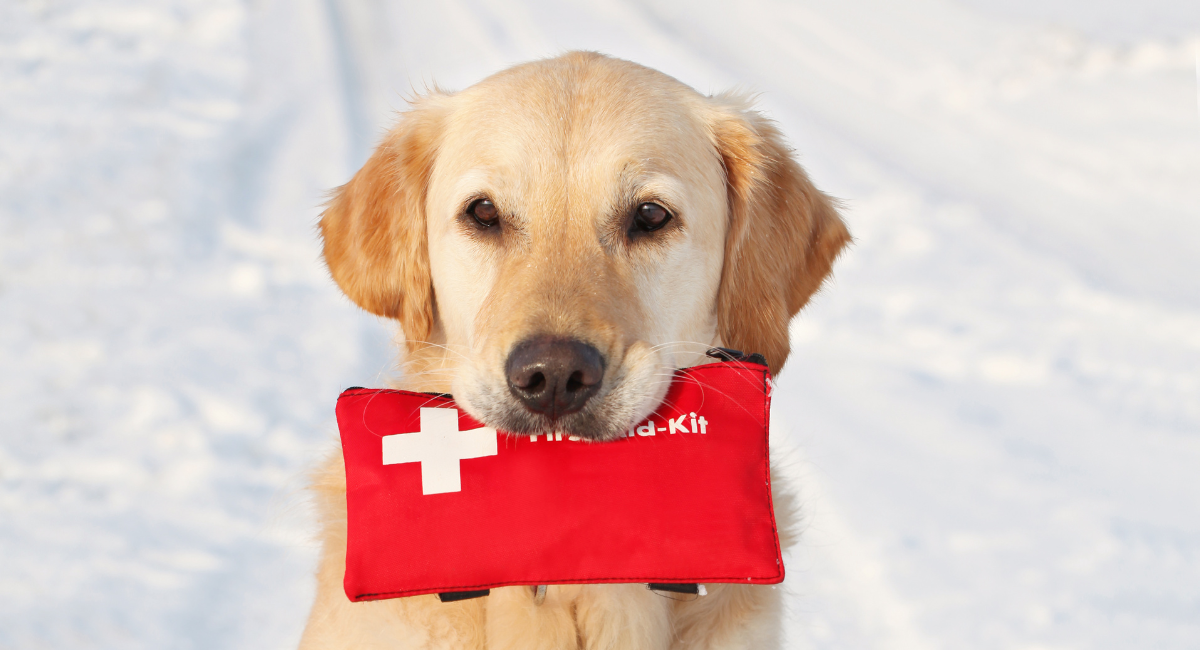When it comes to hiking, a well-stocked and properly organized hiking kit is essential for a safe and enjoyable experience. While hiking first aid kits are an important part of any hiking kit, there are other supplies that hikers should carry in order to be prepared for the unexpected.
Generic First Aid Kits Aren't Ideal For Hiking
Not all first aid kits are created equal, and a generic first aid kit may not have everything you need for a hiking trip. When it comes to outdoor activities like hiking, it's essential to be prepared for emergencies, and having a well-stocked and appropriate first aid kit is crucial.
A generic first aid kit that you might find at a drugstore or big box store might contain the basic medical supplies such as bandages, gauze, and tape, but it may not have the supplies that are specific to outdoor activities like hiking.
Beyond the Basics: Critical Supplies for a Hiking First Aid Kit

What Standard First Aid Kits Don't Include:
1. Navigation Tools:
2. Sun Protection:
3. Insulation:
4. Headlamp:
5. Water Filter or Purification Tablets:
6. Firestarter:
7. Emergency shelter:
8. Whistle:
Why You Need a Hiking First Aid Kit
A hiking kit and a good first aid kit are essential for a safe and enjoyable hike because they provide the necessary gear and supplies for the specific needs and challenges of hiking. A hiking kit includes the items that are needed to navigate the trail and meet basic needs such as shelter, hydration, and nourishment.
Navigation tools such as a map and compass, extra water, and enough food to sustain you throughout the hike are all important elements of a hiking kit. Clothing and footwear suitable for the weather, personal hygiene items, and tools such as a headlamp, whistle, and fire starter, are also important to have in case of emergency.
A hiking first aid kit is important because it provides the supplies needed to address injuries and illnesses that may occur while hiking. A first aid kit includes items such as bandages, gauze, pain relievers, and any other personal medications that a hiker may need. It's also a good idea to include items such as tick remover and snake bite kit or any other specific tools that you might need depending on the area you're hiking in.

In addition, having a well-stocked first aid kit can help prevent a small injury from becoming a more serious problem. For example, if you have supplies to treat a blister early on, you may be able to continue hiking rather than having to turn back early. Packing a hiking kit and first aid kit is essential because they provide the necessary gear and supplies to navigate the trail and address any injuries or illnesses that may occur while on the trails. Whether they are in two separate bags or one, make sure you have both your hiking and first aid essentials on hand.
Hiking First Aid Kit Supplies Checklist:
Comprehensive adventure medical kits should include the following items:
- Adhesive bandages of various sizes (for bandaging small wounds)
- Wound closure strips (for closing minor cuts)
- Sterile gauze pads and non stick pads (for bandaging minor wounds)
- Medical tape (such as silk, adhesive tape)
- Alcohol wipes and antiseptic wipes or solution (for cleaning wounds, cuts and scrapes)
- Tweezers
- Scissors
- Safety pins
- Instant cold pack
- Disposable instant hand warmers
- Elastic bandage or ACE wrap
- CPR mask or face shield
- Disposable gloves
- Pain relievers (such as ibuprofen or acetaminophen)
- Anti-inflammatory cream or ointment
- Triple antibiotic ointment
- Antihistamine (such as diphenhydramine for allergic reactions)
- Oral rehydration salts (such as electrolyte packets)
- Insect sting relief pads
- Burn relief gel or dressing (for minor burns and pain relief)
- Blister kit (such as hydrocolloid blister pads or moleskin)
- Splinting materials (such as air-splint or SAM splint)
- Snake bite kit
- Emergency blanket
- Personal Medications
- Tourniquet
- Hemostatic agent
In addition to the commonly used medications, it's also recommended to carry extra prescription medication, as well as any personal medical equipment such as inhalers, epinephrine auto-injectors, or glucose tablets for diabetes.
And always make sure to have knowledge about basic first aid treatments and wilderness first aid.
Hiking Supplies Checklist:
- Backpack
- Water and water filtration/purification system
- Maps and compass
- Headlamp or flashlight
- Extra batteries or battery pack
- Multi-purpose knife or tool
- Emergency whistle and duct tape
- Fire starter (matches, lighter, fire starter)
- Warm layers and weather-appropriate clothing and rain gear
- Sunglasses and sunscreen
- Hat and bandana
- Tent, sleeping bag and sleeping pad (if camping)
- Stove and cookware (if camping)
- Food and snacks (in a plastic bag)
- Insect repellent
- Sturdy and comfortable footwear
- Trekking poles (if needed)
- Personal hygiene and sanitation items
- Emergency signaling device like a personal locator beacon.
- Hiking first aid kit****
Depending on the length and location of your hike, you may want to bring additional items such as a camera, binoculars, extra cash, or bear spray. Also it's always important to tell someone where you're going and when you plan to return, especially if you're going solo.
Things to Consider:
Hiking Backpack/Bag
One of the most important pieces of gear for any hike is the backpack or bag you choose.When choosing a hiking bag, it's important to consider factors such as size, weight, durability, and features. A good hiking bag should be large enough to carry all of your essential gear, but not so large that it becomes cumbersome to carry. The bag should also be ultralight, watertight and made of durable materials, so it can withstand the wear and tear of hiking.
Additionally, it's important to consider features such as pockets, compartments, and straps to keep your gear organized and accessible.
When choosing a backpack for a day hike, a backpack with a capacity of 20-30 liters is usually suitable. There should be enough room for water, food, a first aid kit, and other essentials. For an overnight hike, a backpack with a capacity of 40-50 liters is a good choice, it should have enough room for a sleeping bag, tent, stove, and other camping gear.
In addition to the right hiking bag, it's also important to be prepared for common experiences that can happen when hiking. Some of the most common experiences include inclement weather, injuries, and getting lost.
In case of inclement weather, it's important to pack appropriate clothing and gear, such as rain gear, extra layers, and waterproof bags. In case of an injury, it's important to carry a well-stocked first aid kit and know how to use it.
And in case of getting lost, it's important to carry a map, compass, GPS, or personal locator beacon and know how to use them.
When hiking in remote areas or national parks, first responders can be hard to reach and if successful, they could take minutes or hours to get to you.
Organization Matters
When it comes to packing your hiking supplies and hiking first aid kit, organization is key. It's important to take the time to pack your gear and supplies in a way that will keep them organized, easily accessible, and make sure that the weight is distributed evenly. An ultralight kit compared to a bulky, rock solid backpack will make a big difference in terms of comfort and safety while on the trail.
Poor packing and organization can result in a messy ball of supplies, which can make it difficult to find what you need quickly and easily. This can be frustrating and time-consuming, especially if you need to access something quickly in an emergency. It also takes up unnecessary space and makes your backpack heavy and unevenly balanced, resulting in discomfort and strain on your back and shoulders.
To avoid these issues, it's important to take the time to plan and organize your gear and supplies. One way to do this is by using packing cubes or compression bags to separate and organize your items by category. This way, you'll be able to easily find what you need without having to dig through a pile of gear.Our Recommendation: Pre Made Kits
Another way to keep your gear organized is by getting a pre made backpacking kit. For many, getting a pre made kit is better than having your own first aid kit. Why? Well, first off, it takes the pressure off of finding and sourcing the right first aid supplies and hiking gear.
With a DIY kit, you run the risk of not having enough supplies and/or insufficient or minimal quantities of the ones that really matter.
First aid kit essentials, while relatively straight forward, can often be overlooked and getting a pre made, wilderness first aid kit ensures you have the right supplies with you at all times.
Another point to mention is that a pre made hiking first aid kit will save weight. The distribution of hiking and first aid gear throughout the bag is extremely well thought out, with the heavier items lower and closer to your back, and the lighter items higher and farther away from your back. Having a pre made kit will cut down the weight of the bag by about half and free up space in your bag for other first aid supplies.
Pre made kits also have clearly labeled pockets and empty pockets for extra supplies. Being able to see where each item is inside the kit, allows you to act in a moment's notice. While not all hiking first aid kits feature a labeling system, a great kit will have distinct sections for each category of items.
Pre made kits, like Redi's Roadie Kit, are some of the best first aid kits out there due to their wide range of supplies, ultra organized interior, and durable exterior. The Roadie isn't just your basic first aid kit. This particular kit provides you with both your survival and first aid supplies all in one bag.
It is a comprehensive kit that provides you with free, first aid courses on how and when to use each item inside. While it may not be the most extreme adventure medical kit out there, its organization system and range of high quality supplies makes it one of our favorite kits for hiking and weekend travel.
Whether it is a DIY or pre-made kit, packing and organization is key when it comes to hiking first aid kits.
Taking the time to plan and organize your gear and supplies can make a big difference in terms of comfort, safety, and ease of use while on the trail. A well-organized backpack will help you be more prepared and enjoy your hike!
Wilderness First Aid Booklet/First Aid Manual
A first aid guide is an important tool to have in your first aid kit because it provides detailed instructions and information on how to address a wide range of injuries and illnesses that may occur while hiking or in a wilderness setting.
Generally speaking, a first aid booklet is a reference guide with step by step instructions on how to address different injuries or illnesses.
In the case of a wilderness setting, the type of injuries or illnesses can be different than in urban or suburban areas, and emergency medical services might be farther away or have a harder time reaching you.
The first aid guide can provide guidance and specific advice on how to address injuries or illnesses in a remote environment.
It can also provide guidance on when to seek medical attention, and how to communicate your location to emergency services if needed.
Additionally, having a first aid manual allows you to familiarize yourself with the contents of the first aid kit before going on a hike, which can help to ensure that you are comfortable and confident with the supplies, how to use them, and how to properly address various injuries and illnesses.
The manual will also provide information on basic life support such as CPR and how to use an AED. This is extremely important if a life-threatening event occurs while in the wilderness. It also helps you to familiarize yourself with the contents of the first aid kit before going on a hike, which can help to ensure that you are comfortable and confident with the supplies and how to properly address various injuries and illnesses.
And on the contrary, if a person is not trained in first aid it can help them understand how to respond to an emergency situation.The best first aid kit will either have a guide included within the kit or offer first aid courses, so make sure to consider the training material available to you when picking your wilderness first aid kit.
Hiking With a Large Group
A good first aid kit may have the essentials needed for a hiking trip, but if you are traveling with a large group and disaster strikes, you may need more than the included supplies.
First aid items to double up on would be adhesive bandages, antiseptic wipes to clean wounds, sunscreen, gauze and non stick pads, medical tape, and triple antibiotic ointment.
Different kits have options for 1 person, 2 people, or a group of 4. Consider who you hike with and get the first aid kit that will accommodate everyone.
Overnight Hiking
Car Camping
Camping in your car is a great way to enjoy the outdoors without having to carry all of your gear on your back. When camping in your car, you can bring more gear and supplies than you would if you were backpacking. This can include larger and more comfortable camping gear such as a bigger tent, a camping stove, and a camp chair.
You also have the option to bring more non-essential items. A few items that fall under "non-essential" would be a cooler with ice, a portable hammock, or even a portable camping shower.

It's important to plan your car camping trip in advance, including looking at the facilities and amenities offered at the campsite.
Some campsites have amenities such as running water, toilets, and fire rings, while others may have more primitive facilities. Knowing what to expect ahead of time can help you plan and pack accordingly. You should also be aware of the rules and regulations of the campsite you plan on visiting. Some campsites have strict rules about fires, pets, and quiet hours, so be sure to check ahead of time and plan accordingly.
When packing for a car camping trip, it's important to keep in mind the weight and size of your gear, so it will fit easily in your vehicle.It's also important to bring items such as a lantern, a flashlight, and extra batteries, and make sure you have a First Aid kit and a survival kit too. Finally, make sure to check the weather forecast and pack accordingly, keep in mind that weather conditions can change rapidly in the outdoors.
Car camping can be a great way to enjoy the outdoors and spend quality time with friends and family.
Overnight Backpacking Trips
When planning an overnight hiking trip, here are some essentials that you should consider packing for your overnight hike in addition to adventure medical kits:
- Shelter: Bring a tent, tarp or a bivy sack, and a sleeping bag or blanket. Make sure your sleeping bag is rated for the expected temperatures.
- Sleeping pad: A good insulation from the ground will keep you warm, comfortable and protected from rocky terrain
- Food and Water: Pack enough food and water for the entire hike. Bring high energy snacks, a water filter, or purification tablets, and a means to boil or treat water.
- Navigation: Bring a map, compass, and a GPS device or personal locator beacon, and make sure you know how to use them.
- Clothing and Footwear: Bring extra layers, rain gear, a warm hat, gloves, and a waterproof jacket, as well as sturdy, waterproof footwear. Bring extra clothes too, if the weather forecasts indicate a change in temperature or in case you get wet.
- Personal Hygiene: Pack toilet paper, a small towel, a hand sanitizer, and wet wipes.
- First Aid Kit: Pack a well-stocked first aid kit, including items such as band-aids, gauze, tape, antiseptic wipes, scissors, cpr mask, tweezers, and over-the-counter pain relievers.
- Tools and Emergency Supplies: Pack a headlamp, a whistle, a fire starter, and a repair kit for your gear.
- Personal Items: Pack your phone and a backup battery, sunscreen, sunglasses, and insect repellent.
Before you head out, it's always a good idea to double-check your equipment, your supplies, and the weather forecast. Also, let someone know your plans and expected time of return, just in case of an emergency.
Quick and Easy Meals For Hiking Trips
- Instant Oatmeal or Porridge: Bring pre-packaged instant oatmeal or porridge and just add hot water for a warm and filling breakfast. You can also add dried fruit and nuts for extra flavor and nutrition.
- Ramen Noodles: Ramen noodles are lightweight and easy to prepare. Just add hot water and let it sit for a few minutes. You can also add a bouillon cube for extra flavor.
- Trail Mix: A mix of nuts, seeds, dried fruit, and chocolate chips makes for a healthy and easy to carry snack. You can mix your own ingredients and portion it out into small bags.
- Jerky: Jerky is a good source of protein and it's easy to pack, it comes in different varieties of meats and can last for weeks.
- Energy Bars: Energy bars are a great option for an easy and quick meal on the go, they come in different flavors and are a good source of energy.
- Tuna or Chicken Packets: These are lightweight and easy to pack, they are also a good source of protein and can be eaten with crackers or on a sandwich.
- Frozen meals: These can include instant rice, frozen pasta, and instant soups, they are easy to prepare and are a good alternative for lunch or dinner.
- Dried fruits: Dried fruits like apricots, apples, and raisins are lightweight, high in energy, and easy to pack.
5 of the Most Hiked Places and Trails in the US

The United States is home to some of the most beautiful and diverse hiking trails in the world. From towering peaks to picturesque waterfalls, there is something for every hiker to enjoy. Here are 5 of the most hiked places and trails in the US that should be on every hiker's bucket list:
1. The John Muir Trail -
The John Muir Trail is a 211-mile trail that runs through California's Sierra Nevada Mountains.Trail passes through some of the most spectacular landscapes in the United States, including Yosemite National Park, Kings Canyon National Park, and Sequoia National Park. Hikers on the John Muir Trail can expect to encounter breathtaking views, alpine meadows, and a wide variety of wildlife.
2. The Pacific Crest Trail -
The Pacific Crest Trail is a 2,650-mile trail that runs from the Mexico-California border to the Canada-Washington border. Trail passes through some of the most diverse and scenic landscapes in the United States, including the deserts of California, the high Sierra Nevada, and the Cascade Range in Washington.
3. The Appalachian Trail -
Appalachian Trail is a 2,200-mile trail that runs from Georgia to Maine, and it is one of the most well-known hiking trails in the United States.
The trail passes through 14 states, and it is known for its rugged beauty and diverse landscapes.The trail is home to an abundance of wildlife, and it offers hikers the opportunity to experience a wide variety of ecosystems.
4. The Continental Divide Trail -
The Continental Divide Trail is a 3,100-mile trail that runs from Mexico to Canada through the Rocky Mountains.Trail passes through some of the most remote and rugged landscapes in the United States, and it offers hikers the opportunity to experience the wilderness of the West.The trail is known for its beautiful alpine meadows, glistening snow-capped peaks, and abundant wildlife.
5. The Bright Angel Trail -
The Bright Angel Trail is a 9.5-mile trail that runs from the South Rim of the Grand Canyon to the Colorado River. The trail is considered one of the most challenging trails in the United States, but it also offers some of the most breathtaking views in the country. Trail is known for its steep descent and the harsh desert environment, but it's worth it for the views of the Grand Canyon.








